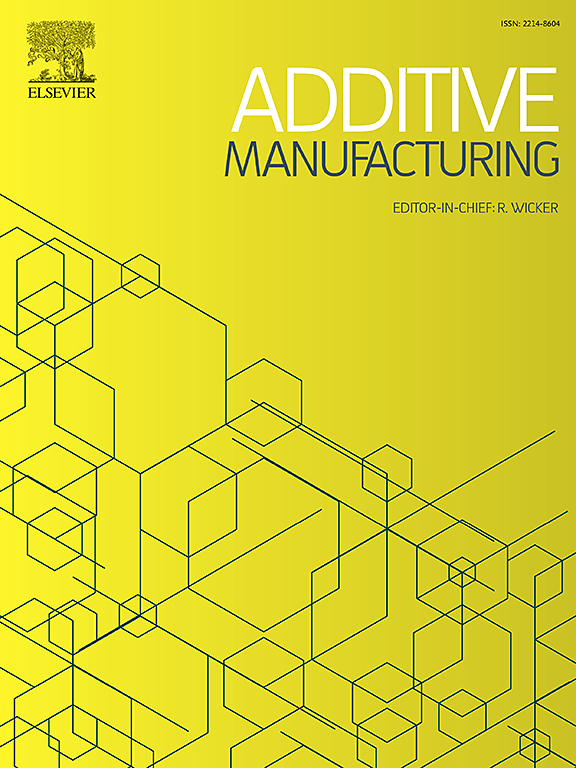通过挤压的硅酮液体沉积建模仪器:激光轮廓术的介绍和评价以及监督的相关指标
IF 11.1
1区 工程技术
Q1 ENGINEERING, MANUFACTURING
引用次数: 0
摘要
虽然硅胶挤出印刷是一种很有前途的技术,但当考虑无支撑印刷时,零件生产仍然是一个挑战。在本文中,我们考虑了缺陷的三个主要原因,即印刷过程中硅酮流速的管理,聚合前零件在自身重量下的变形以及印刷过程中喷嘴-层相互作用引起的变形。本文提出了一种监测层沉积的仪器策略。我们的方法,基于激光轮廓测量,是详细的开源软件来控制打印和扫描。给出了建立点云和提取数据的过程。更重要的是,使用计划层的先前几何信息,引入指标来构建与当前打印失败的主要原因相关的度量。通过实验评价,讨论了指标的充分性及其互补性。新指标的引入为实施高效的有机硅挤出监管开辟了道路。本文章由计算机程序翻译,如有差异,请以英文原文为准。

Instrumentation of silicone liquid deposition modeling by extrusion: Introduction and evaluation of laser profilometry and associated indicators for supervision
While silicone printing by extrusion is a promising technique, part production is still a challenge when support-free printing is considered. In this paper, we consider three main causes of defects, namely the management of silicone flow rate during printing, the part deformation under its own weight before polymerization and the deformations due to the nozzle-layer interactions during printing. An instrumentation strategy is here proposed to monitor layer deposition. Our approach, based on laser profilometry, is detailed with open source software to control printing and scanning. The process to build point clouds and extract data is presented. More importantly, indicators are introduced to build metrics related to the current main causes of printing failure, using prior geometric information on the planned layers. Through experimental evaluation, the adequacy of the indicators and their complementarity is discussed. This introduction of new indicators opens ways to implement efficient silicone extrusion supervision.
求助全文
通过发布文献求助,成功后即可免费获取论文全文。
去求助
来源期刊

Additive manufacturing
Materials Science-General Materials Science
CiteScore
19.80
自引率
12.70%
发文量
648
审稿时长
35 days
期刊介绍:
Additive Manufacturing stands as a peer-reviewed journal dedicated to delivering high-quality research papers and reviews in the field of additive manufacturing, serving both academia and industry leaders. The journal's objective is to recognize the innovative essence of additive manufacturing and its diverse applications, providing a comprehensive overview of current developments and future prospects.
The transformative potential of additive manufacturing technologies in product design and manufacturing is poised to disrupt traditional approaches. In response to this paradigm shift, a distinctive and comprehensive publication outlet was essential. Additive Manufacturing fulfills this need, offering a platform for engineers, materials scientists, and practitioners across academia and various industries to document and share innovations in these evolving technologies.
 求助内容:
求助内容: 应助结果提醒方式:
应助结果提醒方式:


